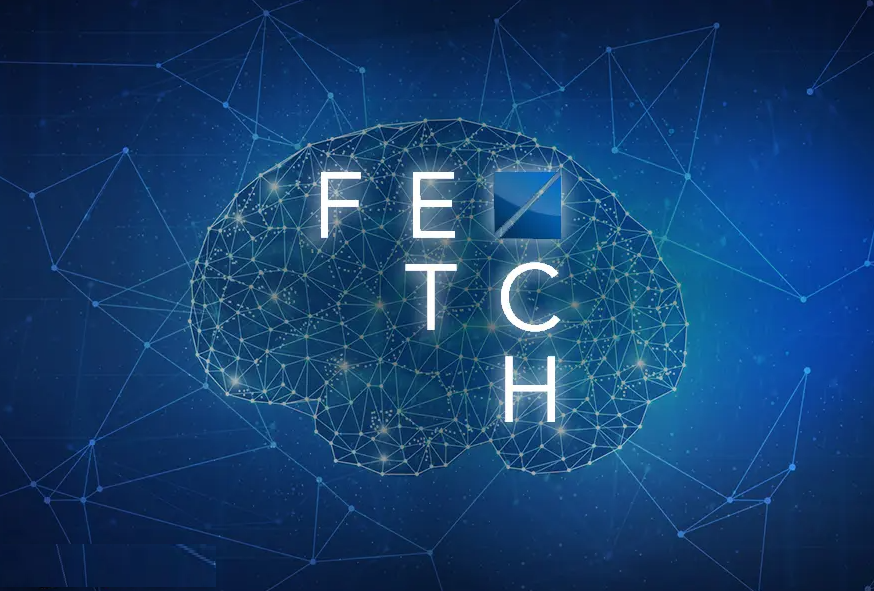Fetch.AI is quite a prominent project in the crypto market with its special way of working. Besides, this is also the 2nd project IEO on Binance Launchpad.
Table of contents
- Fetch.AI Overview
- Overview of the FET token
- Fetch.AI Founders Team
1. Fetch.AI Overview
What is Fetch.AI (FET)?
Fetch.AI (FET) is a next-generation artificial intelligence (AI) protocol that uses the Useful Proof of Work consensus mechanism to build the infrastructure for an autonomous e-commerce economy. This will be an ambitious ecosystem that combines blockchain technology and artificial intelligence to create a decentralized digital network that helps economic components such as data, hardware, services, etc. , people, infrastructure, etc. can work together effectively.
The ultimate goal of Fetch.AI is to create a new internet economy "authorized agent" which is a combination of four components: machine learning technology (Machine Learning - ML), artificial intelligence (Artificial). Intelligence – AI), multi-agent systems and decentralized ledger technology. For example, hotel booking, airline ticket booking, tour booking, etc. to supply chain technologies and services.
What problem does Fetch.AI solve?
The two big problems that Fetch.AI solves are: the automation of applications and the waste of the centralized economic network. Currently, there are many applications that can manage data but lack their autonomy. At the same time, when today's trend has been gradually shifting to a decentralized autonomous model, the fact that the economy is still following the path will easily lead to the situation of wasting resources. For example, warehouses, containers, etc. are empty.
How Fetch.AI Works
Fetch.AI has a three-layer structure to solve the two problems mentioned above. These three tiers include: Autonomous Economic Agents (AEA), Open Economic Framework (OPF), and Smart Ledger (SL).
Autonomous Economic Agents
In the Fetch.AI ecosystem, economic sectors can interact with each other independently, automatically under human control. These objects are representations of machines, services, devices, applications, etc., which help extract data resources from hardware and provide them to consumers. AEA can operate in multiple directions without limitation, including parallel and independent.
Open Economic Framework
Agents in the Fetch.AI ecosystem will call frameworks with their own real-time frameworks just to focus on a few important roles. The first phase will have 2 main types of OEF: trustless and trusted.
Smart Ledger
Ledger is Fetch.AI's digital platform, giving users easy access to AI or ML. In other words, the ledger helps participants who need access to data and resources in the fastest and most convenient way to support the market to process millions of transactions per second.
Practical Application of Fetch.AI
The three super classic applications of this technology can be followed by the transportation, energy and supply chain industries.
Transportation
- Save on shipping costs
- Simplify complex travel routes
- Anticipate dangerous situations
- Auto connect, reroute journey
- Plan your trip
- Reservation system for rooms and tickets
Energy
- Change energy supplier in short time
- Avoid conflicts between suppliers
- Limit interruptions while in operation
Supply Chain
- Improve the ability to manage the industry
- Automatically handle all stages from fuel to consumption
2. Overview of the FET token
What is FET token?
FET is the utility token of the Fetch.AI ecosystem that gives users more motivation to contribute to the development of the network. It is also a mandatory means of joining for those who wish to join the system. Before the mainnet, the FET will have the ERC20 standard of the Ethereum platform. However, after the mainnet launch in 2019, FETs will be swapped to native tokens.
- Token name: Fetch.AI token
- Ticker: FET
- Blockchain: Ethereum
- Smart contract: 0x1d287cc25dad7ccaf76a26bc660c5f7c8e2a05bd
- Decimal: 18
- Token standard: ERC-20.
- Token type: Utility Token
With the above total supply, the FET tokens will be distributed into the following sources:
- Public sale (IEO): 6%
- Private sale: 6.38%
- Seed round: 5.24%
- Foundation and team: 19.9%
- Advisors: 10%
- Future releases: 17.4%
- Mining: 15%
- Foundation: 19.9%
What are FET tokens used for?
- Some of the main functions of the FET token can be used to:
- Staking and become nodes that process transactions and operate the system
- As a reward for node miner transactions
- Payment of gas costs similar to Ethereum
- Access to Fetch.AI Ecosystem for Agents
- Exchange of value between Agents
- Interact, search using tools on Fetch.AI
- Develop algorithms on AI and ML.
On which exchanges can FET tokens be traded?
You can access the following exchanges to trade FET tokens: Coinbase Exchange, Binance, Gate.io, Crypto.com, Bitvavo, KuCoin, MEXC, CoinEx, BitMart…
On which exchanges can FET tokens be stored?
FETs were once part of the ERC20 standard. You can use some of the following storage wallets for FET tokens:
- Wallets on exchanges listed above: Binance, BitMart, KuCoin, ..
- Hardware wallets: Ledger Nano, Trezor, ..
- Soft wallets: MyEtherWallet, MyCrypto, Meta Mask…
3. Fetch.AI's Founding Team
Behind the success of Fetch.AI, it is impossible not to mention the contributions of the following three key names. They are:
- Humayun Sheikh (CEO): is one of the first investors of DeepMind (an AI company that was once eyeed by Facebook but because of unsuccessful negotiations, Google bought it in 2014 for about 500 million USD) . He is also the founder and CEO of two applications uVue and itzMe.
- Toby Simpson (CTO): creator of a-life creatures series as well as first-generation programming developer at DeepMind (2011-2013) with over 30 years of experience. In particular, he has held the position of CTO for three technology companies.
- Thomas Hain (CSO): is a PhD student from the University of Cambridge and a professor at the University of Sheffield, who founded the scientific team on ML AI.







